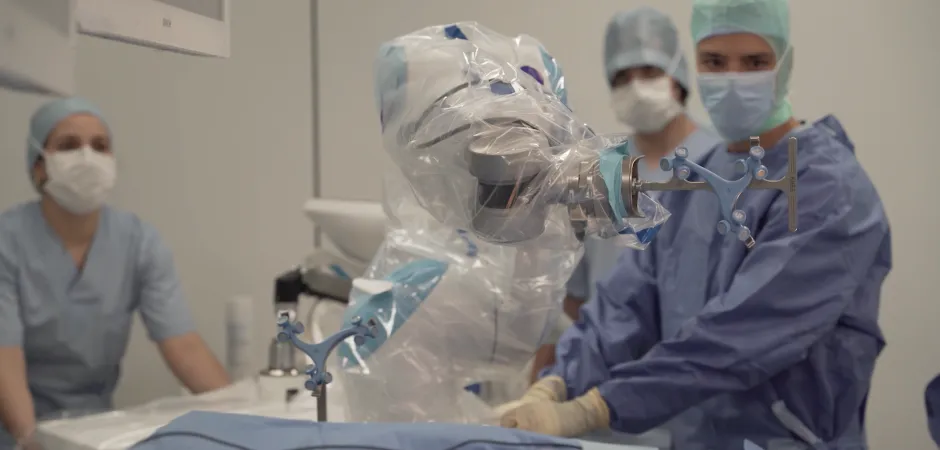In the past ten years, robotic technology has experienced a real boom in orthopaedics, to the point where Chirec now has four robots dedicated exclusively to this specialty. A passing trend or real added value? Here's the opinion of Dr. Michel Vancabeke, Head of the Orthopaedics Department at Delta, and Dr. Pascal Poilvache, Head of the Musculoskeletal Division at Braine-l’Alleud Hospital.
Robots have been present in hospitals for many years, but they’ve come a long way since their early days.
“Initially, we had active robots. Over time, they’ve evolved into collaborative robots that assist us—for example, in positioning saws precisely as we want them,” explains Dr. Poilvache.
Today, orthopaedic surgeons at Chirec performing knee prosthesis procedures have access to one of four robots available to them: two at Delta (the ROSA robot by Zimmer Biomet and the CORI robot by Smith & Nephew), and two at Braine-l’Alleud Hospital (the ROSA robot by Zimmer Biomet and the VELYS robot by DePuy Synthes).
Even greater precision
Dr. Poilvache, a surgeon specialized in knee and hip procedures, now uses a robot for one out of every three knee prosthesis surgeries at Braine-l’Alleud Hospital. He also hopes to soon have access to the necessary component to apply the robotic system to hip procedures.
For him, the robot helps improve surgical performance:
“The robot allows us to refine prosthesis placement by accounting for anatomical and morphological differences between patients, enabling more personalized care. This translates into much greater precision.”
Human expertise remains key
Dr. Vancabeke, who specializes exclusively in knee surgery, emphasizes that mastering surgical skills must come before mastering robotic tools.
“The most important thing is first to be a good surgeon. Then the robot is an added value. Its major advantage is that it forces us to think critically about how we place a prosthesis, which leads to even more precise placement. It allows us to better assess the optimal position for the implant. But let’s not forget that the human factor remains central—because it is still the surgeon who tells the robot where to cut.”
He concludes:
“So far, industry studies show that robots clearly provide greater precision. Time will tell—over the next 10 to 15 years—if clinical outcomes are also better. In any case, at CHIREC, the leadership has clearly embraced robotic technology by making the necessary investments to offer both patients and surgeons the most advanced equipment available.”

